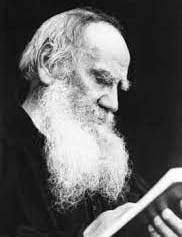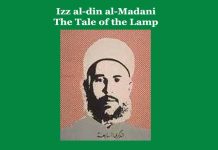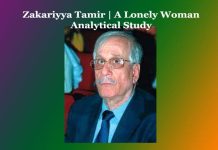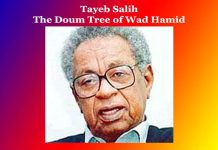Tolstoy | How Much Land Does a Man Need | An Analytical Study
Tolstoy | How Much Land Does a Man Need | An Analytical Studylytical Study
Tolstoy | How Much Land Does a Man Need | An Analytical Study
How Much Land Does a Man Need’ is a Russian short story by Leo N. Tolstoy (1820-1910). Greed is the main theme of the short story. Through this story, the author has shown that too much of anything is bad.
The story is about a peasant named Pahom. He is a well-off peasant and lives in a village. One day his sister-in-law (his wife’s sister) came to their house. They led a conversation on the topic of village life versus town life. They put forward their respective arguments in support of their respective lifestyle. Pahom was listening to them. Pahom, in final, commented that if he had plenty of lands he should not fear the devil himself. Then his desire for more land increased. One day he came to know that a lady close to his village happened to sell her estate. Pahom bought some acres of land and sowed seeds on and in turn, he harvested plenty of crops. Some days later he happened to meet a stranger who was also a peasant. From him, he came to know that beyond the Volga there is plenty of land to be bought at a cheap price. Then he sold his property and shifted there. After a year he again came to know from a tradesman that in the land of the Bashkirs land could be had almost for nothing. Hearing this Pahom became restless and being desirous of buying more plots of land, he set out for the land of the Bashkirs. He took a servant with him and some thousands of money. He went ahead to the north for about a week and after crossing more than three hundred miles he reached the place. There he met the Bashkir-head who said, “We sell it by the day. As much as you can go round on your feet in a day is yours, and the price is thousand roubles.” Pahom was overjoyed and spent the whole night in a vigil. The next morning the Bashkir- head and some others of the village took him to a far-off hillock and mounted there. He after the bargain that all the land he covers on foot within the day would go to him and if he fails to return to the same spot from where he started his walking before the sun sets then he would lose both the money and the land. He took out his money and put it on his cap and walked on foot to cover a vast land. As much as he went ahead he found more and more fascinating pieces of land and he began to go farther. He became tired but he did not like to take a rest as he wanted to cover more and more land. After covering a vast land he became so exhausted that he felt as if he was dying, yet he walked on. He said to himself, “An hour to suffer, a life to live.” With all his remaining strength he rushed on, bending his body forward so that his legs could hardly follow fast enough to keep him from falling. Just as he reached the hillock it suddenly grew dark. He looked up and gave a loud cry, “All my labour had been in vain’’. He thought to stop but the Bashkir was shouting at him. He took a long breath and ran up the hillock. He reached the top and reached the cap with his hand. He uttered a cry; his legs gave away beneath him. Pahom’s servant came running up and tried to raise him. But he saw that blood was flowing from his mouth. Pahom was dead. His servant picked up the spade and dug a grave long enough for Pahom to lie in and he buried him there. Six feet from his head to his heels was all he needed.
Thus the author has shown that too much greed ruins a man.
Pahom is the main character of the story. He is greedy of getting more and more. The more he had the more he wanted, but he did not reckon on the consequences of his greed. He is the type of those who are never contented with whatever they have.
In narrating the story the author has employed the Objective Method with skill. In this method, an author keeps himself away from his story and delineates his story objectively.
The story, in Structure, is a perfect one. It bears visibly all the stages of a good short story. The opening is direct. In the opening, the storyteller introduces Pahom, his principal character. It seems to be ended in the climax.
The Setting of the story is consistent with the events and situation. The author gives a good deal of description of his main character along with the environment of his event.
The Dialogues employed in the story is very logical as he uses them sparingly but all the dialogues have taken his story ahead and unfolded the inner nature and motives of his characters.
The Philosophy of Life is also found in the story. The author has not expressed it directly but leaves it to be drawn out by his readers after the reading of it that too much of anything is bad or too much greed ruins a man.
The Language of the story is very simple as it is characterized by the use of concrete and formal (not unfamiliar) words and phrases and it is free from poetic imagery and much emotional expression.
All the Qualities of a good short story as —unity of purpose, brevity, spontaneity and universality are present in this short story. The brevity which is taken of as the soul of a short story is also maintained throughout the story as all the component elements of a good short story are employed in the story with possible economy without causing any harm to the perfectness of the story. Thus the universality is gained by means of the reliable representation of the theme and event. The story begins and ends with a spontaneous logical order and the author seems not to use any force in bringing about the end of his story through proper stages.
It is a short story of long Length as it comprises about eight thousand words.
As the entire component elements along with required qualities of a good short story are present in it, in a logical order, so it may be called that it is a short story of the first grade. 0 0 0
Tolstoy | How Much Land Does a Man Need | An Analytical Study
Read More: Leo Tolstoy’s Short Stroy ‘God Sees the Truth But Waits’-An Analytical Study
N. B. This article entitled ‘Tolstoy | How Much Land Does a Man Need | An Analytical Study’ originally belongs to the book ‘World Short Story Criticism‘ by Menonim Menonimus. Tolstoy | How Much Land Does a Man Need | An Analytical Study
Books of Literary Criticism by M. Menonimus:
- World Short Story Criticism
- World Poetry Criticism
- World Drama Criticism
- World Novel Criticism
- World Essay Criticism
- Indian English Poetry Criticism
- Indian English Poets and Poetry Chief Features
- Emily Dickinson’s Poetry-A Thematic Study
- Walt Whitman’s Poetry-A Thematic Study
- Critical Essays on English Poetry
- Tawfiq al-Hakim’s Novel: Return of the Spirit-An Analytical Study
- Tawfiq al-Hakim’s Novel: ‘Yawmiyyat Naib Fil Arayaf’-An Analytical Study
- Analytical Studies of Some Arabic Short Stories
- A Brief History of Arabic Literature: Pre-Islamic Period …
Books on Linguistics by M. Menonimus:
- A Brief History of the English Language
- Essays on Linguistics
- My Imageries
- Felicitous Expression: Some Examples
- Learners’ English Dictionary
Related Searches:
- Short Stroy Criticism
- The Indian English Short Story
- Individual and Society …
- ‘Deliverance’ by Premchand Analysis
- Summary of Rabindranath Tagore’s ‘The Exercise Book
- Short Story ‘Yellow Fish’ Essay Example
- Notes on Roger Mais’s ‘Blackout’
- ‘Blackout’ by Roger Mais
- ‘The Dog of Tetwal’ Saadat Hasan Manto
- The Three Questions
- R. K. Narayan Biography, Books
- Short Stories R. K. Narayan
- ‘Lawley Road’ by R K Narayan
- The Peasant’s Bread’ Summary Notes
- The Imp and the Peasant’s Bread
- How Much Land Does a Man Need
- How Much Land Does a Man Need? Question …











